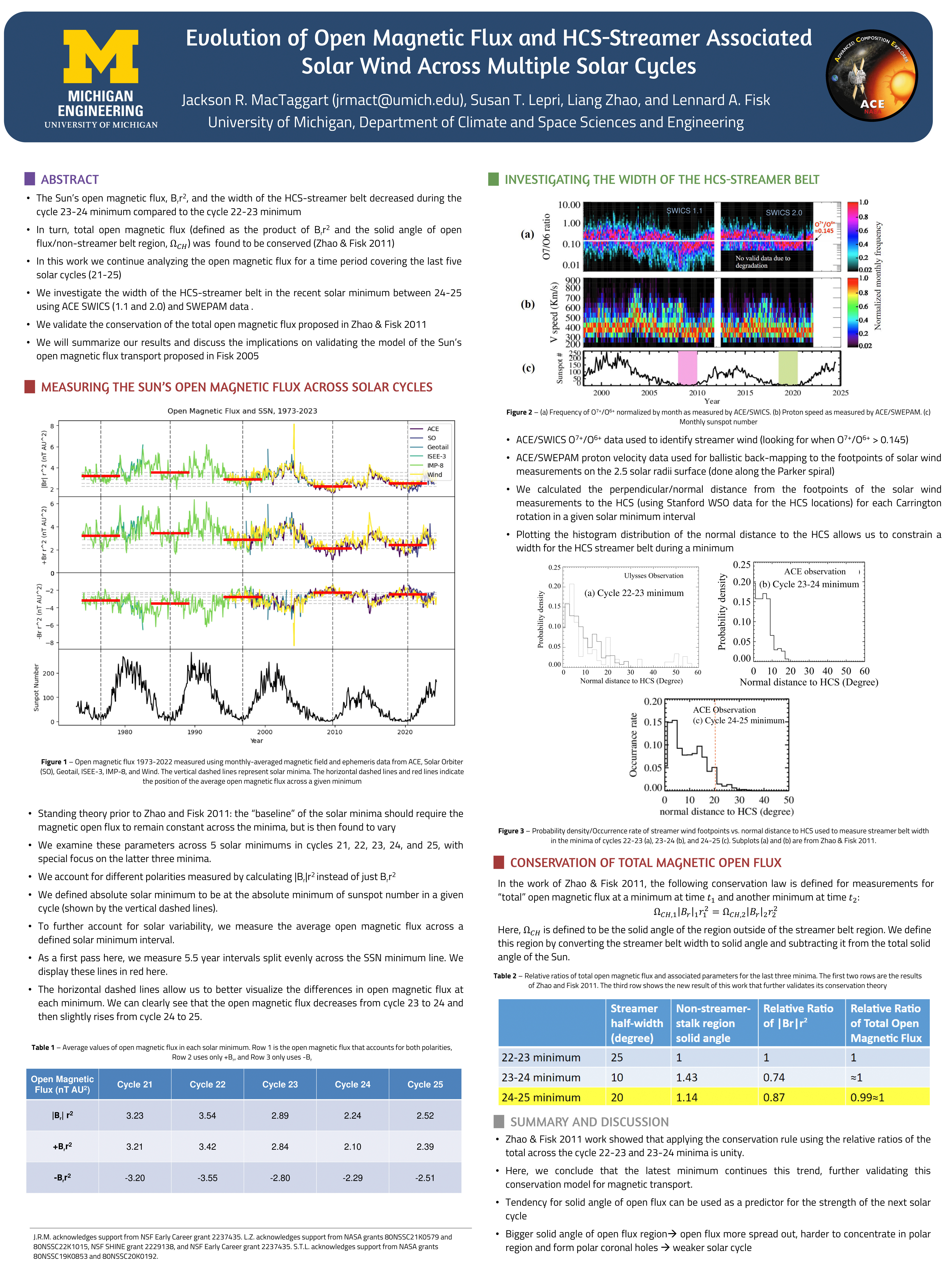Authors: Jackson R. MacTaggart, Susan T. Lepri, Liang Zhao, Lennard A. Fisk
During the solar minima of solar cycles 23 and 24, the heliospheric magnetic field and the solar wind were observed to behave much differently than expected. In particular, previous studies showed that the magnetic open flux of the Sun, calculated as the product of the average radial component of the Sun’s magnetic field and the squared radial distance from the Sun, was observed to have decreased along with observed changes in solar wind streams. This was in contrast to the standing theory that the “baseline” of the solar minima should require the magnetic open flux to remain constant across the minima. In this work, we examine these parameters across five solar minimums in cycles 21, 22, 23, 24, and 25. Using measurements of the heliospheric magnetic field and solar wind proton dynamic data (e.g., proton speed) and heavy ion composition (including charge state and elemental abundances) from ACE, Geotail, ISEE-3, IMP-8, Wind, and Solar Orbiter, we show that these parameters, with special focus on the magnetic open flux, have evolved differently with the solar cycle. In addition, we investigate the width of the HCS-streamer belt in the recent solar minimum between 24-25 using ACE SWICS (1.1 and 2.0) and SWEPAM data. With this analysis, we validate the conservation of the total open magnetic flux proposed in Zhao & Fisk 2011. We will summarize our results and discuss the implications on validating the model of the Sun’s open magnetic flux transport proposed in Fisk 2005.


